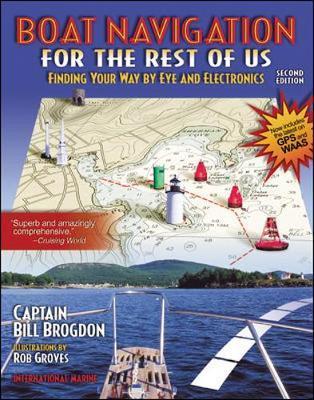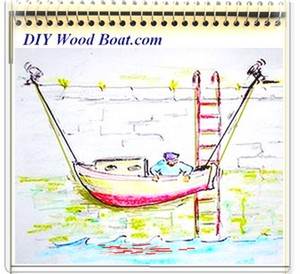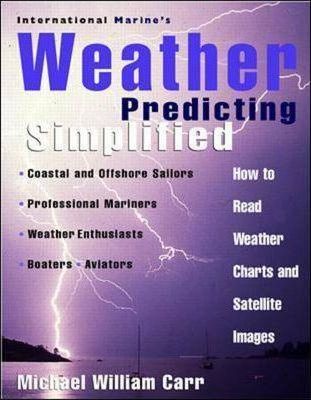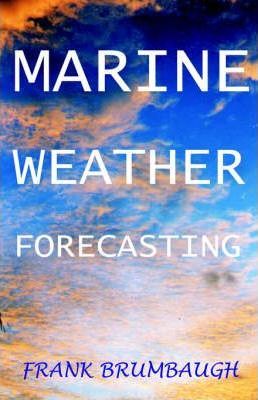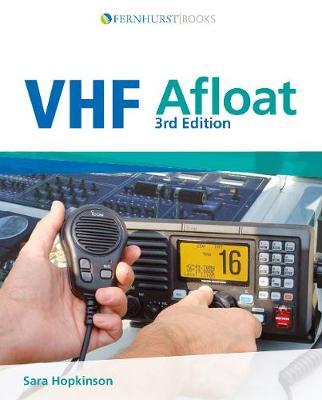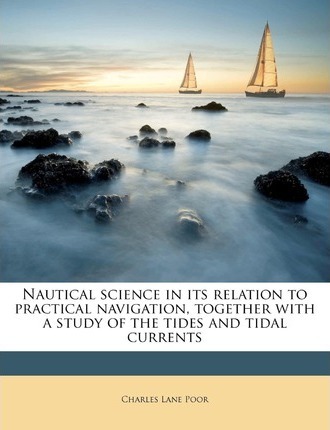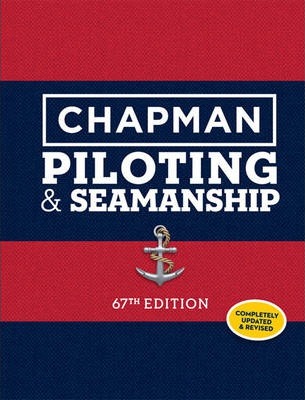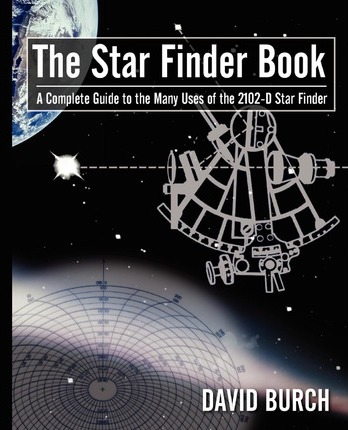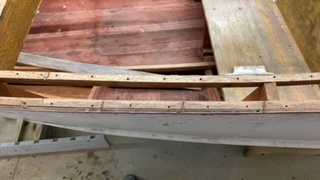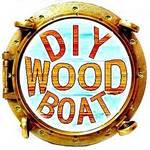- Home
- Navigation Terms
- Navigation
- Charts
- Passage Planning
- Pilotage
- GPS
- The Compass
Compasses for Boat Navigation
Magnetic Compasses are the easiest, cheapest and most reliable instruments used for boat navigation.
Even if you are in the middle of an ocean, out of sight of land, the magnitised needle or card will still point to the magnetic north.
And it will do this unerringly anywhere on the surface of the globe, without the need for electricity and without any reliance on the outside such as GPS satellites or other high tech navigational aids.
Magnetic.
A magnetic pointer, as a navigational instrument,
was first used
for navigation
in China as far back as the 11th century.
The liquid allows the card to swing with the minimum of friction and damps any excessive swing or wobble, making it easier to read.
Friction needs to be kept to minimum as the Earth's magnetic
field is
fairly weak at the surface.
However, the basic principle remains the same.
Although today we think of the needle or card as pointing towards magnetic north, the original Chinese navigators thought of their needles as pointing towards the south.
All magnetic compasses rely on a magnet which is allowed to pivot and align itself with the Earth's magnetic field.
This field however is not aligned perfectly with the Earth's rotational axis.
So, the needle points to the magnetic north or south rather than the geographic north or south poles.
The reason this happens is not entirely clear, one theory is that it has something to do with molten iron swilling around in the earth's core.
What is known and important for the navigator to remember, is that the magnetic north and south poles are not at the geographical north and south and that they move.
The difference between the direction of true north and magnetic north is known as the Variation or Declination and can vary by as much as 25 miles in a year.
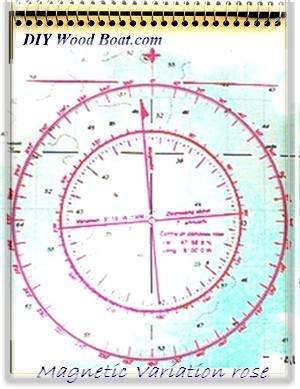 Chart Variation Rose
Chart Variation RoseAnd the angle of this Variation or declination varies across the surface of the globe.
All nautical charts should indicate the Variation for that particular area at the time of publication, as well as indicating by how much it will change over time.
Something that isn't accounted for on your charts is any Deviation which is specific to your boat.
Because the magnet in your instrument has to be so sensitive it will also be affected by any nearby ferrous materials and any nearby electromagnetic forces.
The needle or card can end up showing an error due to nearby lumps of ferrous metal such as the boats engine as well as phones, speakers or even a hand held compass left nearby.
To avoid the latter causing problems you will just have to be careful where you or your crew leave such things.
As for the engine or other fixtures, these will have to be compensated for.
They can be balanced out using small correction magnets placed in a binnacle but this is a specialized job and only used on ships.
The usual practice for the small boat owner is to create a deviation card by doing a compass swing.
Traditionally this would be done by taking bearings on fixed land features, nowadays however GPS which is not subject to magnetic deviation can be used to compare headings.
The deviation card can then be used by the navigator when he is converting between true and magnetic headings.
There are a few, fortunately rare, locations in the earth's magnetic field where magnetic anomalies occur.
Fortunately these sources of magnetic anomaly will be indicated on your charts.
There are, as per usual with sailors, a couple of easy to remember rues for remembering how corrections should be allowed for.
The CADET rule for variation;
When converting from magnetic: ADd East to get True.
It follows that converting from true to magnetic is the reverse, subtract east.
For deviation you can use the saying;
Deviation east, magnetic least, in other words subtract from the magnetic course.
Deviation west magnetic best, in other words add the correction.
affiliate linksHand-held.
The hand held or hand-bearing-compass is an important piece of equipment to have on board.
Its main use is for taking bearings of shore features in order to get a fix.
But it is also useful when monitoring the relative bearings of other vessels where there is a risk of being on a collision course.
It is possible to do this using the steering-compass but they are rarely mounted in such a way as to make this either easy or accurate.
And accuracy is important, which is why the better compact variety are designed for ease of handling and fitted with a sighting device.
Many come with either a battery powered backlight or a photo-luminescent dial to allow for use at night.
And a prism for sighting through that eliminates any parallax error.
As with the steering-compass the bearing will be a magnetic bearing which will need to be converted to true bearing before plotting on a chart.
affiliate linksGyrocompass.
Gyrocompasses are used mostly on ships and steel boats.
Because they are non-magnetic they are not affected by ferrous metal of the hull, nor are they influenced by any stray magnetic fields or nearby electrical power circuits.
And they have the added advantage that they can be set to indicate true north rater than magnetic north.
However, they do require an electrical power supply for the motor which keeps the gyroscope spinning.
And they require to be checked periodically against a magnetic one to correct any errors they might pick up.
A magnetic-compass should always be carried as a backup.
Solid state.
Electronic fluxgate-compasses are becoming increasingly common, often included as a component part of other solid state electronic devices.
While they do require a stable supply of electrical power, they don't have any moving parts to go wrong.
They use magnetic field sensors which provide data tor a microprocessor which then sends the information to either a digital or analog display unit.
They are often built in to auto pilots, GPS receivers, mobile phones and such like.
Because of their size they are becoming increasingly popular on small boats.
However, a magnetic compass which is not dependent on any sort of electrical power is still the navigator,s best friend.
NATIVE ASYNC
